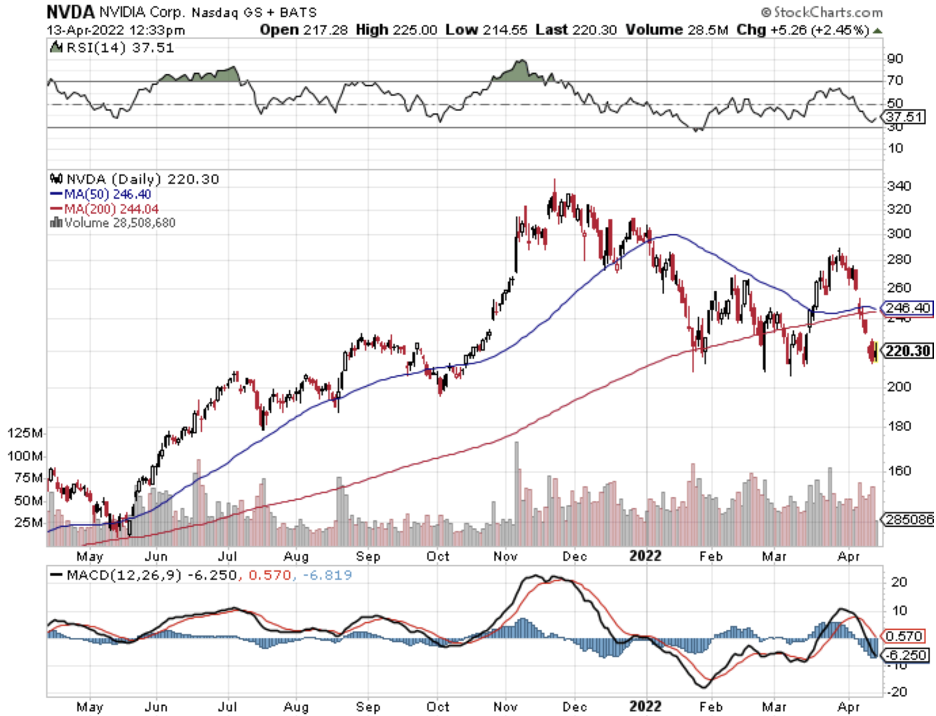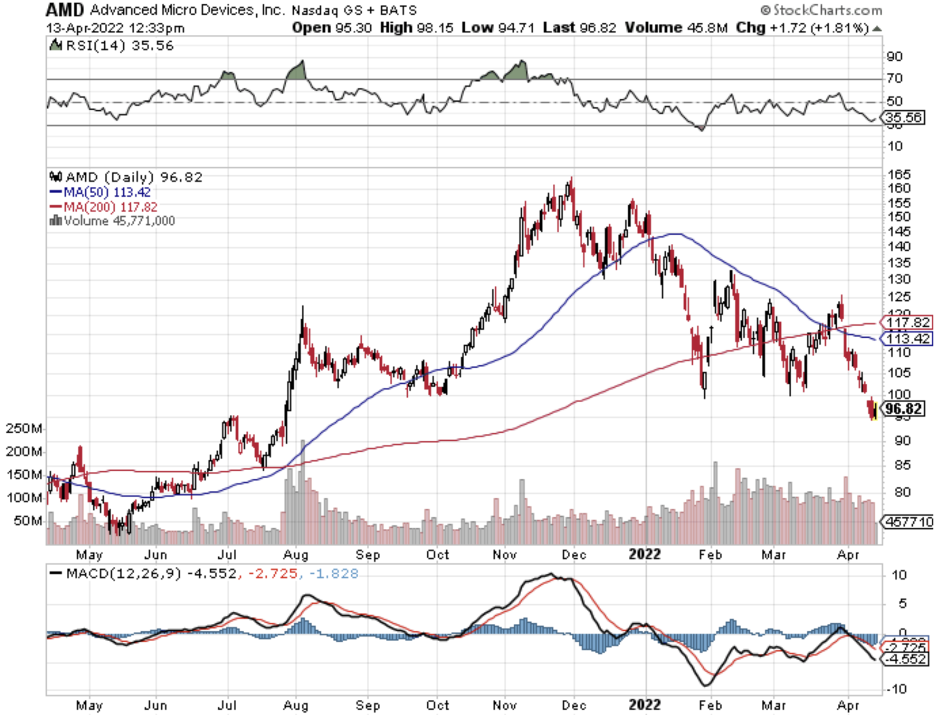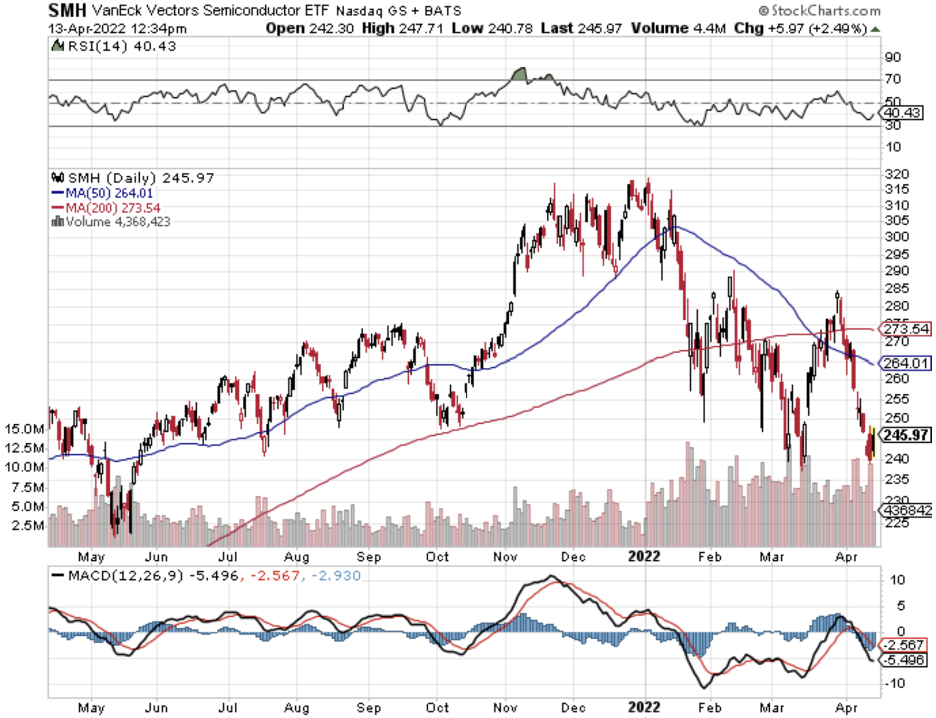The once smoking hot semiconductor industry and its stock prices have rolled over.
First, let me refresh some memories of how we got here in the first place.
During the pandemic and lockdowns, it was thought that semiconductor companies were the winners as consumers, unable to leave their homes, were forced to huddle inside glued to their screens.
Never had the world’s demand for electronics been so elevated and the bringing forward of economic overperformance is now on the downtrend.
It appears that chip companies will be unable to follow up that performance with an encore.
November 2021 represented the short-term high-water mark for chip companies as many stocks in the best of breed have cratered by 50% since then.
AMD (AMD) has dropped to $97 from $155 and the price action is emblematic of boom-bust cycles that chip companies are infamous for.
Now the short-term future doesn’t seem as rosy as it once was and the current uncertainty has delayed investments as chip companies have read the tea leaves and given up capital investments like new chip factories.
Top dog Nvidia (NVDA) which produces CPUs and is at the core of every cutting-edge technology in the world has also been stung by its share price dropping around 30% since the peak in November 2021.
This isn’t the death of the chip industry, and the share price will need to digest the confluence of bad news.
Chip companies are also highly volatile in their price action with the same type of pullback in Apple or Microsoft 3X less volatile.
Peeling back the layers, what is the situation closer to the ground?
The US Central Bank turning on the hawkish turbo boosters mean that many parts of the equity market are feeling their impulsive reaction.
No doubt the Fed has been behind the curve for almost a year, but that’s another topic.
Their sudden reversal means they have no choice but to bring forward a recession by hiking rates faster than expectations and the losers in this is growth tech.
At the consumer level, higher inflation means that sticker prices for electronics have trended higher for various items.
Not only that, the inflation across the board and deep hits to the overall cost of living have taken purchasing power out of the pockets of the median US shopper.
The math simply doesn’t work out if shoppers are paying more for gas, groceries, and housing, they are simply less inclined to refresh their phones, iPads, TVs, and so on.
Other big-ticket items on the chopping block are products like appliances.
There is a major guzzler of chips like washing machines, fridges, and heating and cooling systems that all require sensors.
The semiconductor market is cyclical. When the economy is thriving, it is doing well because when consumers are confident, they tend to spend on the incremental device.
Adding insult to industry is that the tightening of capital markets will make borrowing more expensive and the path to profits narrower.
Just as critical, no CEO or CFO likes to discover that the cost of capital has jumped to a prohibitive rate, because these are the tool they tap to build multi-billion dollar factories.
Holding off on investments sacrifices long-term growth and capacity for short-term balance sheet strength.
Without too much pretentious banter, high interest rates mean relatively less profit.
Much of the decline is starting to get priced into the stock prices of NVDA and AMD.
I believe investors should be dollar cost averaging as these stocks fall possibly another 5-10%.
I would be shocked if these stocks fall another 20% from here.




